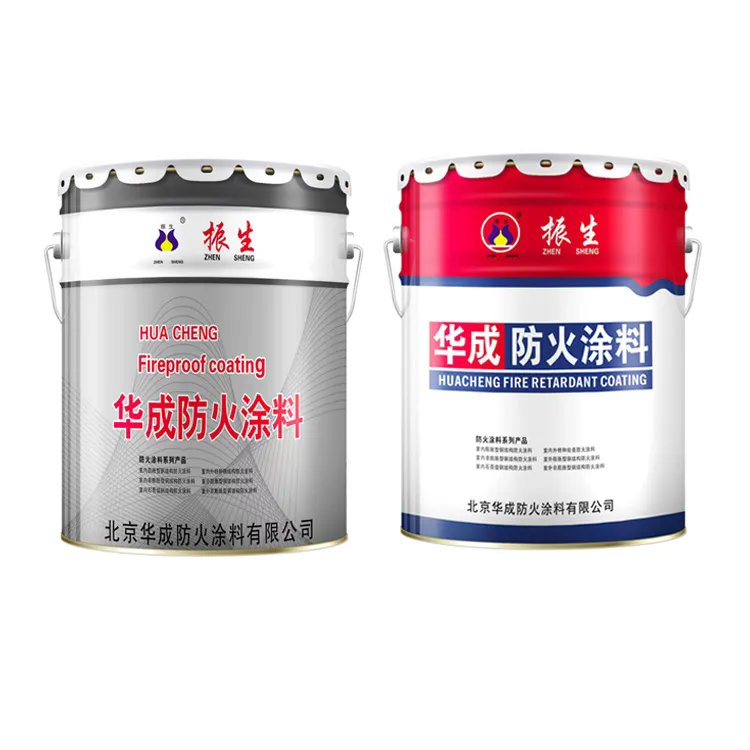Why Should You Consider Exterior Fire Retardant Paint for Your Building?
2024-11-05
When it comes to protecting buildings, fire safety is a top priority. One effective way to enhance this protection is by using exterior fire retardant paint. But what exactly does fire retardant paint do, and why is it worth considering for your property? In this blog, we’ll dive into the key benefits, applications, and features of exterior fire retardant paint to help you understand its importance and value.
1. What Is Exterior Fire Retardant Paint?
Exterior fire retardant paint is a specially formulated coating designed to slow down or prevent the spread of flames on the surfaces it covers. Unlike standard paints, which can easily catch fire and fuel its spread, fire retardant paint forms a protective barrier when exposed to high temperatures. This reaction helps reduce flame propagation, giving occupants and first responders more time in case of a fire emergency.
2. How Does Fire Retardant Paint Work?
The key to fire retardant paint’s effectiveness lies in its chemical composition. When exposed to heat, the paint undergoes a chemical reaction that creates a char layer on the surface. This layer acts as an insulating barrier, significantly slowing down heat transfer and reducing the material’s ability to burn. By forming this protective shield, fire retardant paint helps prevent flames from spreading rapidly across exterior surfaces, which can make a crucial difference in an emergency.
3. Where Should Exterior Fire Retardant Paint Be Applied?
Exterior fire retardant paint is ideal for a range of applications, especially in high-risk areas or buildings where fire safety is critical. Common areas of application include:
- Commercial Buildings: Office complexes, warehouses, and manufacturing plants can benefit from added fire protection.
- Residential Properties: Homes in wildfire-prone areas or multi-family residences like apartments.
- Public Buildings: Schools, hospitals, and government facilities where occupant safety is essential.
- Industrial Sites: Factories or chemical plants where hazardous materials might increase fire risks.
Applying fire retardant paint on these structures’ exteriors can enhance their resilience and add an extra layer of safety.
4. What Are the Benefits of Using Exterior Fire Retardant Paint?
Using fire retardant paint for exterior surfaces offers several important advantages:
- Enhanced Fire Safety: The primary benefit is that it helps contain and slow down the spread of fire, giving people more time to evacuate safely.
- Building Code Compliance: In many areas, fire-retardant coatings are required by building codes, particularly for commercial or public buildings. Using this paint can help ensure compliance and avoid costly penalties.
- Weather and UV Resistance: Many exterior fire retardant paints are also formulated to withstand outdoor elements like rain, humidity, and UV exposure, offering durability along with safety.
- Long-Lasting Protection: Once applied, fire retardant paint provides lasting protection, helping to maintain the fire resistance of the structure for years.
5. Can Exterior Fire Retardant Paint Improve Property Value?
Yes, investing in fire safety features like exterior fire retardant paint can positively impact property value. For homeowners, this extra layer of protection can be an attractive selling point, particularly in fire-prone areas. In the commercial sector, enhanced fire protection can reduce insurance premiums, making the property more financially appealing. A well-protected building is not only safer but also more valuable on the real estate market.
6. How Do You Apply Exterior Fire Retardant Paint?
While fire retardant paint can be applied similarly to regular paint, it's crucial to follow specific guidelines for optimal performance. Professional application is often recommended to ensure even coverage and correct thickness, which are critical to the paint’s fire-retardant properties. Applying multiple coats may be necessary, depending on the product and the level of fire resistance required. Working with a professional can also ensure that the paint meets local building codes and standards.
7. Is Fire Retardant Paint Eco-Friendly?
Many modern fire retardant paints are designed with environmental considerations in mind. Low-VOC (volatile organic compound) formulations help minimize environmental impact and improve air quality around the building. By selecting eco-friendly fire retardant paint options, property owners can contribute to sustainability while ensuring fire safety.
8. How Do You Choose the Right Fire Retardant Paint for Your Needs?
When selecting exterior fire retardant paint, consider factors such as:
- Level of Fire Resistance: Different paints offer varying levels of fire resistance. Look for products that meet or exceed your local building regulations.
- Weather Resistance: For exterior applications, choose a paint designed to withstand weather conditions like rain, sun, and temperature fluctuations.
- Compatibility: Ensure the paint is compatible with the material of your building’s exterior, whether it’s wood, metal, or concrete.
- Brand Reputation: Choose reputable brands with proven fire safety standards and reliable customer reviews.
Conclusion: Is Exterior Fire Retardant Paint Worth the Investment?
Exterior fire retardant paint is a smart investment for anyone looking to increase a building’s fire safety, meet regulatory requirements, and potentially add to property value. This specialized paint offers peace of mind, durability, and a proactive approach to fire safety. Whether you’re safeguarding a commercial facility or protecting your home, exterior fire retardant paint can play a crucial role in preventing the spread of fire and keeping people safe.



